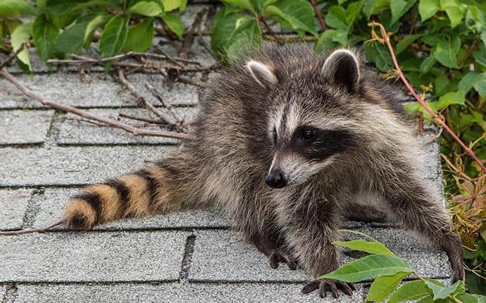You may think it’s impossible for a raccoon to end up in your attic. They’re so big, after all. They couldn’t possibly get inside. Right? Unfortunately, no. Raccoons do find their way into attics and they do it on a regular enough basis that raccoon removal services have become a standard offering by many pest control companies, including Prosite. If you have a raccoon in your attic, you’re probably wondering what to do next. Read on.
Why and How is There a Raccoon in My Attic?
When the weather gets colder, raccoons will look for a warm place to spend the winter. Although they don’t hibernate, they can spend weeks at a time sleeping and they need a sheltered place to do it. If they haven’t already made their way into your attic over the spring or summer to nest and raise their young, the fall is the perfect time of year for them to do so.
But how do they get in? Raccoons are skilled climbers. It’s nothing for them to climb into the highest branches of a tree or up the downspout on your house. Once they make it onto the roof, either by climbing up the house itself or by climbing a tree that abuts the house, they begin to explore and look for weak spots. You may think your roof is strong and raccoon-proof, but you could be wrong.
Weak areas on your roof are often found around soffits and eaves. Raccoons will often exploit the tiniest of holes, chewing and clawing away at them until they’re big enough to squeeze through. Depending on the size of the raccoon, some can fit through holes only four inches wide. They can also push their bodies against certain spots to further weaken them before getting inside.
What Problems Do Raccoons Cause?
As you can imagine, raccoons can do a lot of damage once they’re in your home. First of all, they’ll leave feces and urine all over the place. This is not only gross, it’s also a health risk as they can contain dangerous pathogens, as well as encourage the growth of mold.
Raccoons will also destroy your property. They’ll chew and scratch away at insulation, wood, pipes, and wires. This is not only costly to repair, but can also cause water damage or a fire hazard.
While unlikely, if a raccoon manages to make its way into your living space, you could be in danger of scratches, bites, and more. Raccoons can spread diseases and parasites, and are known to carry rabies.
What to Do About a Raccoon in Your Attic
If you have a raccoon in your attic, it’s essential to take care of it immediately. However, DIY solutions are never suggested due to the difficulty of removing a raccoon, as well as the potential for harm to the homeowner.
Prosite has the experience, knowledge, and equipment to humanely remove any raccoons that have taken up residence in your attic, but we don’t stop there. We also offer services to repair the damage caused by raccoons and shore up your home’s weak spots so that a raccoon invasion doesn’t happen again.
If you hear scratching in your attic, don’t wait. Contact the Central Washington wildlife control pros at Prosite.

